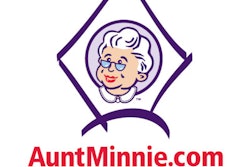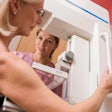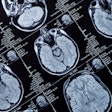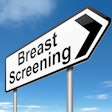
Minnies winners, page 2
Best Radiologist Training Program
Minnies 2020 winner: Stanford University, Stanford, CA
 Stanford University.
Stanford University.There's a lot for Stanford University's Department of Radiology to boast about. The department touts four residency programs, 10 clinical fellowship programs, and six research programs funded by the U.S. National Institutes of Health.
But it's not the accolades that separate Stanford's radiology training program from the competition, according to director Dr. Payam Massaband. It's the Silicon Valley mindset.
"The startup culture permeates every aspect of our department," said Massaband, himself a former Stanford radiology resident and fellow. "We're always looking to innovate, always looking to improve, and willing to fail fast."
For radiology trainees, this unique culture of innovation results in opportunities to work with peers studying everything from electrical engineering to economics. It also means that the program's top-notch faculty are willing to sit down with residents to tackle common goals.
"Many of the improvements that we've made directly resulted from residents saying, 'We think that this is an opportunity,' " Massaband said.
One such resident-driven program is RadCombinator, a name that harkens to the iconic Silicon Valley startup accelerator YCombinator. Originally designed as a wellness program, RadCombinator empowers residents to pitch projects they're passionate about. If accepted, residents get protected time from the clinic to pursue their goals.
Last year, three RadCombinator residents won RSNA awards for research conducted during their protected time. But other residents have used that time to pursue projects without such straightforward ties to radiology, such as writing a book.
"It has made a difference because people can invest their energy and time in something they feel passionate about," Massaband said.
The department is also in the process of reimagining resident training. This year, each division is piloting programs that shift away from an apprenticeship training model. Next year, the department will focus on giving residents more autonomy.
"We joke in the educational leadership of our department that you see people investing more time thinking about how to train AI algorithms than thinking about how best to train a resident," Massaband said.
That commitment to investing in people -- trainees included -- runs through the entire department. To Massaband, it's a reflection of Dr. Sanjiv Sam Gambhir, PhD, the department's beloved chair who died of cancer in July.
While Gambhir is well known for his research accolades, Massaband said the former chair also held a firm commitment to education and the tripartite mission of research, teaching, and patient care. This year's win not only serves as a continuation of Gambhir's legacy but also as a silver lining to a difficult year for the program.
"It is hard to overstate how important he was to establishing who we are now," Massaband said. "Though we're heartbroken at his loss, we're powering forward as strong as ever because of those investments he made in people."
Runner-up: Massachusetts General Hospital, Boston, MA
Best Radiologic Sciences Training Program
Minnies 2020 winner: Duke University, Durham, NC
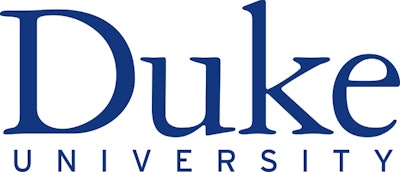
Duke University is well-known for its radiologist education programs. Now the university is building on that success with this year's Minnies award for Best Radiologic Sciences Training Program.
The hallmark of technologist training at the university is the Duke Advanced imaging Radiology Technologist (DART) program. Program directors Dr. Lynne Koweek and Dr. Daniele Marin created DART a few years ago in recognition of the crucial work technologists do in order to provide quality imaging and excellent patient care.
The program offers experienced technologists from Duke and other institutions the opportunity to expand their advanced imaging skills through small-group learning and workshops. One of the unique advantages of the one- to five-day courses is the dedicated time for radiologists and technologists to work side-by-side, according to Marin, a radiologist specializing in abdominal imaging.
"There are not many opportunities for technologists to really interact with radiologists because of our very busy clinical practice and the nature of our work," Marin told AuntMinnie.com. "This really gives an opportunity for that interaction."
Currently, DART provides focused deep-dives into three challenging imaging technologies: dual-energy CT, cardiac CT angiography, and body MRI applications. Marin and Koweek are looking to expand DART into additional modalities, and Marin would eventually like to see similar programs at other universities and community hospitals.
In addition to DART, Duke offers an annual conference-style seminar for technologists to hear from radiologists and expand their knowledge. Technologists at Duke also participate in monthly meetings.
Marin credited the success of technologist training at Duke to partnerships with vendors that give the university access to cutting-edge imaging technologies. He also said the support of the department was critical to this year's win, noting departmental chair Dr. Erik Paulson not only understands the value of technologists but also invests resources in their education.
"There is passion, vision, and a willingness to invest resources," Marin said. "All of these things created a very successful program."
This year's win was particularly notable for Marin because the DART program is so new and because the victory comes on the heels of Duke's win for Best Radiologist Training Program last year. But he said it's also special because of the organization giving the awards.
"AuntMinnie is one of the widest available platforms for radiologists and residents and technologists," Marin said. "To be publicly recognized as a leader in education for technologists is a great satisfaction. It's a testament to all the hard work, what we've been doing over the years."
Runner-up: Emory University, Atlanta, GA
Most Significant News Event in Radiology
Minnies 2020 winner: COVID-19 pandemic and its impact on radiology

As the biggest healthcare crisis of the past 100 years, it's no surprise that the Minnies expert panel picked the COVID-19 pandemic as the Most Significant News Event in Radiology.
The pandemic has had multiple effects on radiology, from clinical to economic to educational. It's prompted radiology to mobilize its resources to help with a surge of infected patients while also enduring a collapse in imaging volume as nonessential exams were canceled. The radiology conference season was wrecked for the duration of 2020, while many residents put their professional advancement on hold as this year's board exams were postponed to 2021.
Now, over six months after the pandemic began, it's still hard to tell where radiology stands. Some optimism is beginning to return (along with imaging volume), as indicated in a recent survey of radiology administrators and business managers. But most report that exam volume is still not yet back to where it was before the crisis began.
What's more, many administrators and managers report that they've laid off staff as a cost-cutting move during the pandemic, while also putting major capital equipment purchases on hold. In an industry that's as dependent on big iron as radiology, such a freeze can have disturbing long-term implications if it continues.
Going forward, an optimist's view would hold that radiology is one of the medical specialties best suited to the new world of social distancing and remote work that's developing. Thanks to teleradiology, the discipline was able to transition to remote work without much fuss.
With a little luck (and an effective vaccine), hopefully 2020 will be the last year that the COVID-19 pandemic wins the Most Significant News Event in Radiology category in the Minnies.
Runner-up: American Board of Radiology postpones 2020 exams
Biggest Threat to Radiology
Minnies 2020 winner: Burnout of physicians
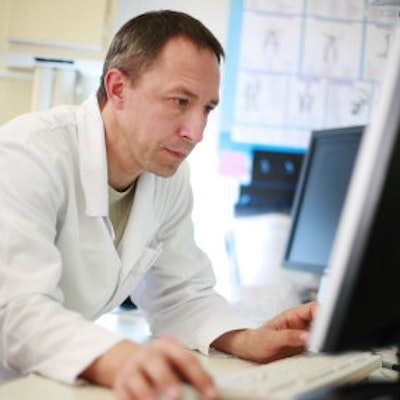
It says a lot about the pervasive nature of physician burnout that the Minnies expert panel judged the phenomenon to be even more of a threat to radiology than the COVID-19 pandemic, which has reshaped the discipline in 2020.
Maybe that's because there are signs that COVID-19 has made physician burnout even more of a problem than it was prior to the novel coronavirus outbreak. As with the rest of society, the social isolation steps taken to mitigate the spread of the SARS-CoV-2 virus have exacted a heavy emotional toll on individuals throughout society -- and radiologists are no exception.
While it's relatively easy for most diagnostic radiologists to move their work from an office-based reading room to a workstation at home, that doesn't necessarily mean they like the change in surroundings. In fact, a September 2020 study from France documented a range of emotional problems caused by the pandemic among radiologists, including insomnia, anxiety, and depression.
In all, over 30% of survey respondents reported depression, 35% experienced anxiety, and almost 41% reported insomnia. Interestingly, the survey found that radiologists working in private practice were more likely to experience these issues compared with those in public hospitals.
Is there hope for doctors suffering from burnout? While technology is believed to be at least one of the factors behind rising burnout levels, some believe that it could offer a way out if tools like artificial intelligence can be perfected to relieve radiologists of their more monotonous tasks.
Until that happens, radiologists can mitigate the effects of burnout through small acts of self-care, or what one study called "micropractices." These include mindfulness, positive thinking, and simply stopping to take a deep breath.
Runner-up: COVID-19 pandemic and its impact on radiology volumes
Hottest Clinical Procedure
Minnies 2020 winner: 3D printing of internal anatomical structures
This year's selection of 3D printing as the winner of the Minnie award for Hottest Clinical Procedure marks the fourth year out of five that the technique has won the category.
Perhaps the selection reflects the versatility of 3D printing as both an educational and clinical tool. Educators are finding that physical 3D models are a great way to inform both patients and trainees about medical procedures. In particular, 3D models are useful for surgical planning.
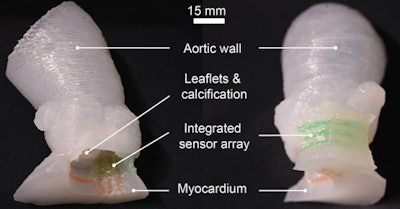 Patient-specific 3D-printed aortic root models with integrated 3D-printed soft sensor arrays can be used to improve planning of TAVR procedures. Images courtesy of the McAlpine Group, University of Minnesota.
Patient-specific 3D-printed aortic root models with integrated 3D-printed soft sensor arrays can be used to improve planning of TAVR procedures. Images courtesy of the McAlpine Group, University of Minnesota.Three-dimensional printing is also becoming more sophisticated with new customized printing processes and specialized inks, some of which can mimic soft tissue as well as harder structures in the body like bone. And as always, medical imaging allows 3D printing to deliver personalized care by enabling models to be created from a patient's own scans.
Indeed, 3D printing was touted at a recent talk as among several advanced visualization technologies that are coming into their own. Because the 3D printing process usually begins with image acquisition, radiology can serve as the gateway to growing use of the technology.
The only question is whether you bring a 3D printing service in-house with your own printer or send data to an outside service for printing, which can be cheaper in the short term but more expensive if you are creating a large number of models. The key thing is just to get started.
Runner-up: 7-tesla MRI







